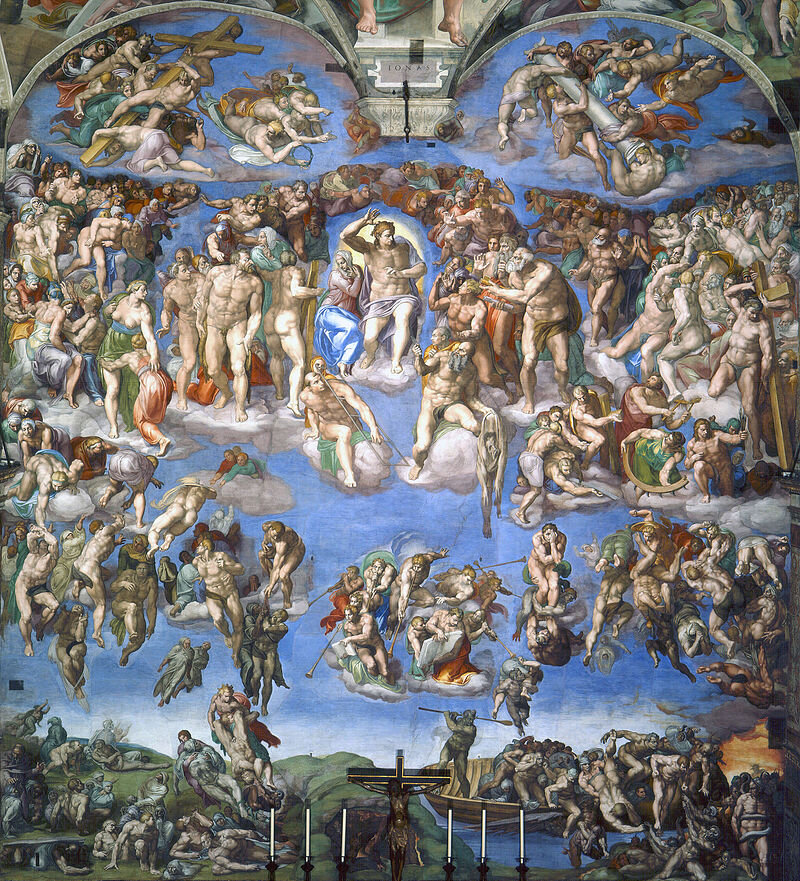Today — February 18 — in 1564, Michelangelo Buonarroti (sculptor, painter, architect) died a few days before his 89th birthday.
So on this day commemorating the master’s death, I wanted to share a few of the lessons he has taught me about how to lead a successful life.
Work Harder Than Everyone Else
Despite what the legends suggest, Michelangelo’s talent did not fall miraculously from the heavens… No. He WORKED HARDER than everyone else: prepared more, drew more, dedicated more hours to his craft. Once, he worked so hard that he forgot to take his boots off for so many days in a row that when he did remove them, the skin of his feet came off with his shoes. Now, that’s dedication. So if you want to be the best at your craft, do what Michelangelo did: don’t rely on natural talent; work harder than everyone else.
Embrace the Flaws
The block of marble that eventually became Michelangelo’s David was old and brittle, had been stored outside for decades; a previous sculptor had botched the stone, leaving behind a big gash and ugly knot… Anyone else might’ve added more stone to make the composition “perfect,” but not Michelangelo. No, he embraced those flaws and worked around the gash and knot, using them to guide his composition. The result: arguably the most perfect statue in all of history.
Challenge Yourself
Michelangelo considered himself a sculptor, but when the pope commissioned him to paint the ceiling of the Sistine Chapel, did he choose an “easy” design, one that might’ve been more manageable for a “non-painter”? No. He created a complex scheme, complete with hundreds of figures and an intricate architectural framework that took him four years to complete. Michelangelo NEVER settled. He always challenged himself to higher heights than anyone else could imagine.
Follow your Heart
When Michelangelo was young, his father and uncle used to beat him for wanting to carve marble. But did Michelangelo give into that pressure, walk away from sculpting, and take a government job as his family wanted? No. He followed his heart and dedicated his entire life to carving marble; he was still working on his final Pieta sculpture a week before he died.
Appearances Do NOT Matter
Here is Michelangelo, as painted by Raphael in his School of Athens fresco, in about 1510. Michelangelo notoriously dressed like a common worker — work tunic, work boots — scraggly hair and beard; didn’t bathe much… The time Michelangelo could’ve put into his appearance, he put into his WORK. And I’ve always loved that about him and tried to emulate it. In a world that sometimes seems too wrapped up in appearances, let Michelangelo inspire you to strive for substance OVER style.
Defy Convention
Michelangelo — whether it’s here in the Medici Chapel in Florence or in the Sistine Chapel or when designing the dome of St. Peter’s basilica — did NOT do what everyone has had done before him. He always took risks and defied convention. Just look at those twisting and turning figures above; do they look like ideal figures from Ancient Greece? No. He was pushing art to new, innovative levels — and all artists have continued to follow in his footsteps centuries after he’s gone.
Don’t Be Afraid to Ruffle Feathers
Here is Michelangelo’s Moses statue for Pope Julius II’s tomb — and arguably a portrait of the temperamental pope. Michelangelo and the pope had a famously tempestuous relationship; neither man was afraid of upsetting the other, even though, in Michelangelo’s case, he was upsetting A POPE, the most powerful man in the world. But Michelangelo—nor Pope Julius—ever worried about ruffling a few feathers, as long as it meant they were doing what was right.
Push to Improve on Previous Efforts
When Michelangelo was in his 60s, Pope Clement VII commissioned him to return to the Sistine Chapel (where he had painted the ceiling when he was in his 30s) to paint a Last Judgment scene on the altar wall. In order to paint a coherent picture, Michelangelo had to destroy his own work, painting over two of his lunettes (the two half-oval portions at the top) that he’d painted as part of the ceiling scheme. He also, once again, pushed himself to go beyond the style of the ceiling and move into a new, explosive form of art.
Love Fiercely
Michelangelo may be known as a legendary loner, but he loved fiercely: he loved his family (even when they beat him); he loved his marble (even when it refused to “speak” to him); and he loved his friends—including fellow painter Francesco Granacci; noblewoman Vittoria Colonna; and the young, handsome nobleman Tommasso De’ Cavalieri (the picture to the left is a portrait Michelangelo drew of him), to whom Michelangelo wrote some of his greatest love poetry. When Michelangelo loved someone — or something — he was unafraid of dedicating his whole heart to that love, regardless of the consequences.
Have Faith
Even in difficult times, Michelangelo never lost faith—in his marble, his work, in a higher power, a higher purpose… Sometimes, according to his poetry, he lost faith in himself, but never in the powers that went beyond him. So, even when times are tough for you, think of Michelangelo and keep the faith (whatever that looks like for you).


















